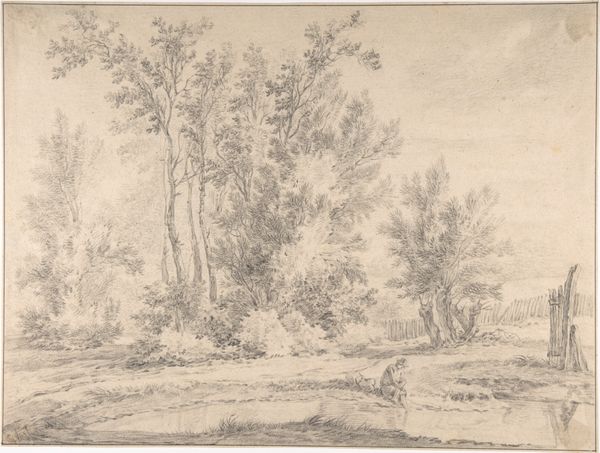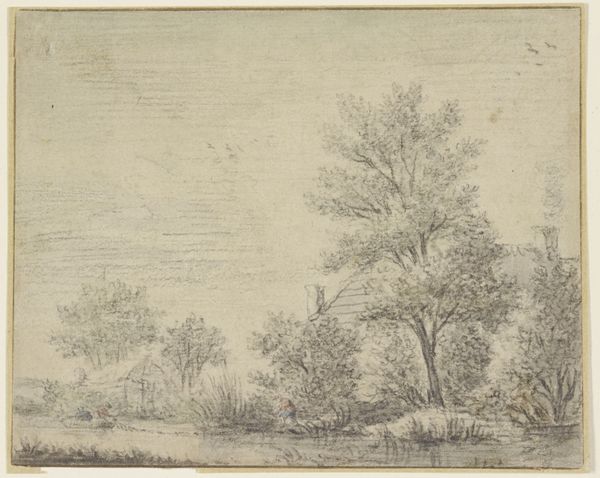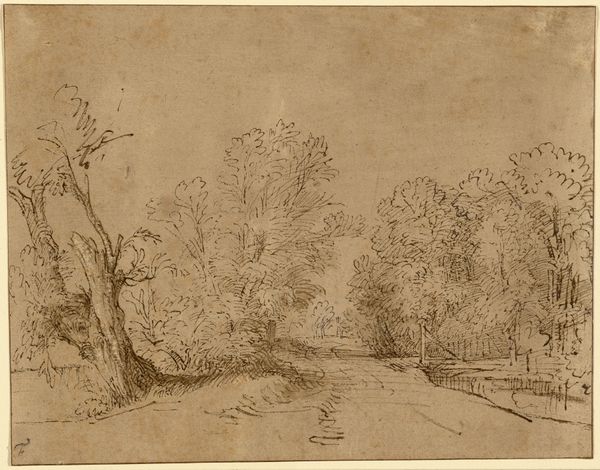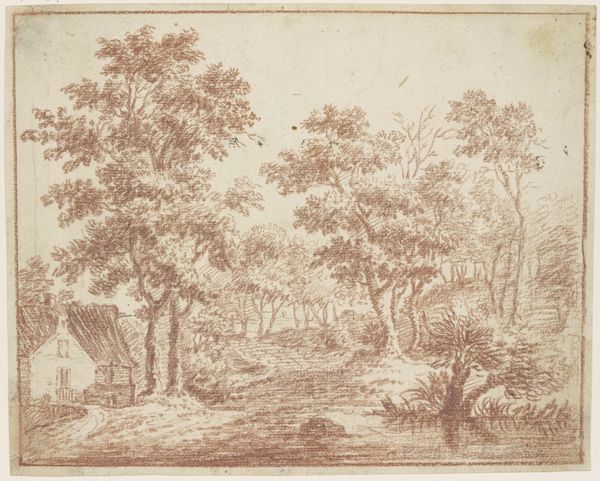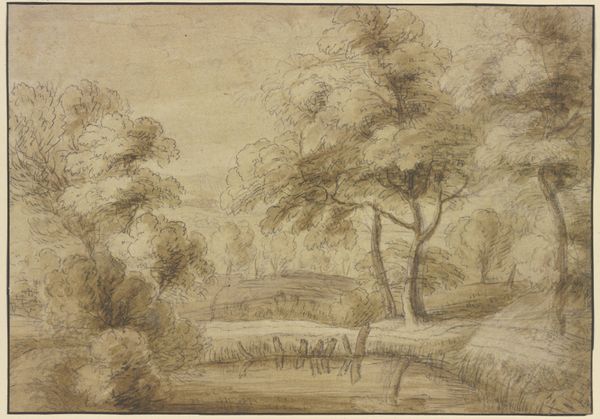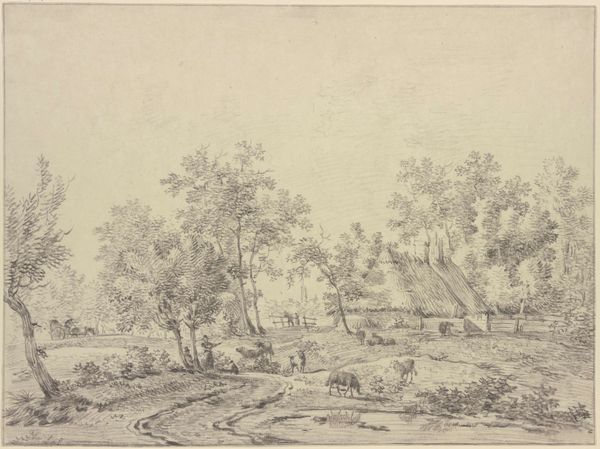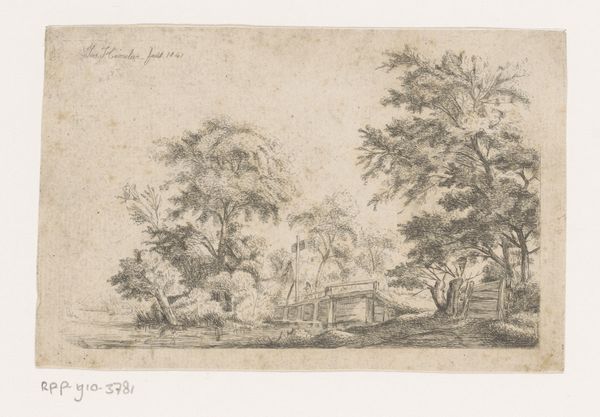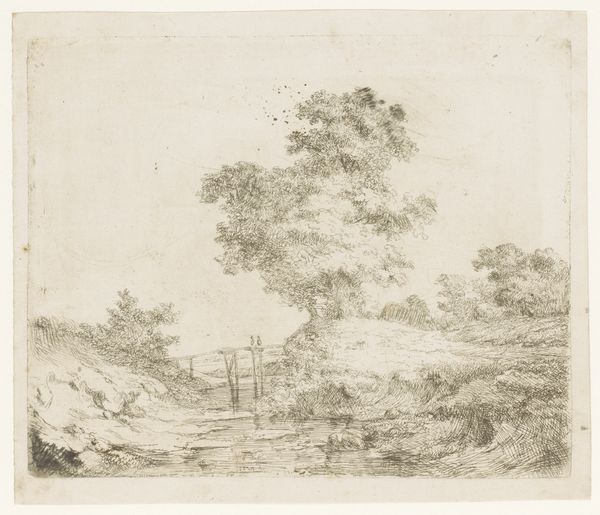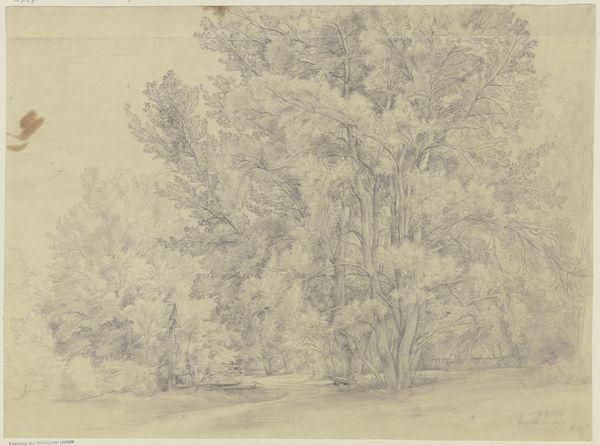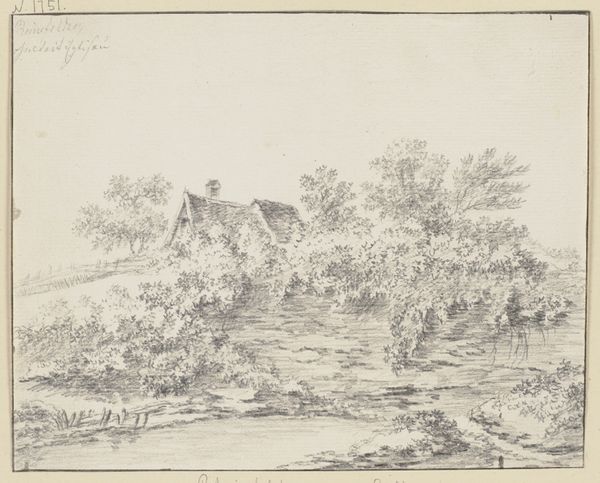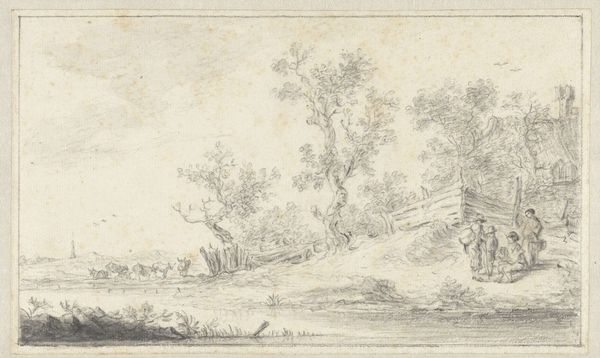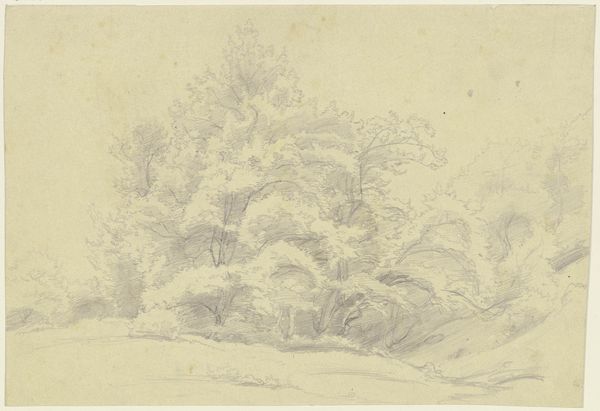
drawing, pencil, graphite
#
drawing
#
landscape
#
romanticism
#
pencil
#
graphite
Copyright: Public Domain
Curator: Here we have “Waldweg mit einem Wanderer, links eine Lichtung,” which translates to “Forest Path with a Wanderer, a Clearing to the Left,” a drawing by Philippine Maria Schütz. It resides here in the Städel Museum's collection, rendered in pencil and graphite. Editor: My first impression is one of subdued yearning. There’s a tranquility, but also a sort of wistful solitude carried in the single figure walking into the depths. Curator: The Romantic era in which Schütz worked greatly valued nature as a place of reflection, an antidote to industrial society. It was increasingly a place where individuals could connect with their deeper selves and find solace. Editor: Absolutely, and you see that represented so clearly with the symbolism of the solitary wanderer. That lone figure, nearly swallowed by the woods, brings to mind the quintessential Romantic idea of the sublime— humanity humbled by nature's grandeur, in a world of larger, unexplainable, natural powers. The lighting especially accentuates that feeling, doesn't it? Curator: Indeed, the composition reinforces that. Note how the trees are meticulously detailed. Their presence is much stronger as compared to the quickly rendered solitary figure. The path, almost beckoning him in, creates an inviting contrast. What impact does this landscape aesthetic have on the viewing public and their own role as a social spectator? Editor: For me, it stirs a kind of cultural memory, that age-old fascination with landscapes. Forests hold dual symbolic power – places of potential danger and spiritual insight. It invites introspection. To follow or not to follow the path into the woods. The way one can never truly control all that is felt. Curator: I'm interested in what the landscape becomes as the Romanticism period developed, as a commodity that both shaped and was shaped by an ever-growing public, increasingly invested in art. I think about those who viewed Schütz's works; who did it speak to then? Editor: It makes you wonder what the figure represents too – whether the drawing becomes an early study on tourism or a projection of some other journey the figure is making. Overall, the artist uses delicate rendering to evoke something immense and timeless. Curator: It brings to mind the ever-present question that any historical image must raise for its public: whose story are we telling when we see these kinds of Romantic images today? Editor: Definitely something to reflect upon. Thank you, it has been wonderful to think about those points.
Comments
No comments
Be the first to comment and join the conversation on the ultimate creative platform.
